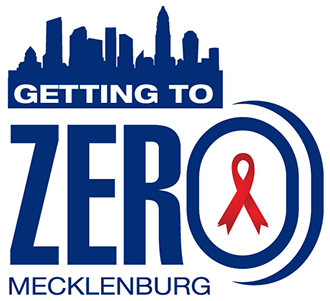Prevention Data
What is Mecklenburg County's PrEP coverage?
What's this graph about?
This graph depicts the estimated PrEP coverage in Mecklenburg County, by year. These data were retrieved from or based on Centers for Disease Control and Prevention (CDC) calculations. PrEP coverage represents the number of residents (16 years and above) estimated to have received PrEP during the year, divided by the number of residents estimated to need PrEP, expressed as a percentage. Higher PrEP coverage means more people are getting PrEP relative to the number who may need PrEP medications.
Who is taking PrEP - medication to prevent an HIV infection?
What's this graph about?
The graph represents annual data for people taking pre-exposure prophylaxis (PrEP) to prevent HIV infection. PrEP is taken by people who do not have HIV but may have an increased risk for exposure to HIV.
Where is PrEP being used in Mecklenburg County?
What's this graph about?
This map shows data for people who are taking oral PrEP medicine to prevent HIV. The map identifies the locations of the pharmacies providing the PrEP medication to the patients by pharmacy ZIP Code Groups.
U=U (Undetectable=Untransmittable) and viral suppression's role in preventing new HIV infections
Viral suppression, defined as having fewer than 200 copies of HIV per milliliter of blood, is a powerful tool to prevent new HIV infections. People whose viral loads are suppressed (“Undetectable”) by taking antiretroviral therapy (ART) cannot sexually transmit the virus to others (“Untransmiittable”).
The graph representing the percent of PWH in Mecklenburg County viral suppression can be found on the Treatment page.
PrEP Initiative Program (PIP): How many people are actively taking PrEP in the PIP?
What's this graph about?
The Mecklenburg County-supported PrEP Initiative Program (PIP) provides access to PrEP for uninsured and under-insured adults and adolescents who do not have HIV infection but who are at increased risk for acquiring HIV. The graph displays semi-annual data for people actively taking PrEP in the PIP, by each half-year reporting period.
PrEP Initiative Program: WHo has been receiving preventative HIV medication?
What's this graph about?
The graph presents semi-annual data for uninsured and under-insured Mecklenburg County residents who started taking PrEP by each half-year reporting period. These people are participating through the Mecklenburg County supported PrEP Initiative Program (PIP).
Note: This represents new starts of PrEP during the reported half-year periods, and these people may or may not be currently actively taking PrEP.
What are the cumulative numbers of persons who started PrEP in the PrEP Initiative Program (PIP)?
What's this graph about?
The graph presents cumulative data for uninsured and under-insured Mecklenburg County residents who have started taking PrEP since 2021, by each half-year reporting period. These people are participating through the Mecklenburg County supported PrEP Initiative Program (PIP).
Note: This represents new starts of PrEP, and these people may or may not be currently actively taking PrEP.
Get Connected
Learn more about HIV/STD Testing Options;
or call 704-432-8378.
Free HIV/STD Testing Locations in Mecklenburg County.
Request HIV testing for an event.
Complete a confidential self-referral form
Health Statistic Data Request Form.
To join the Getting to Zero community group, email g2zmeck@mecknc.gov.
Find a Ryan White Provider.
Learn more about PrEP in Mecklenburg County.
Find a PrEP Provider.
Looking for another resource? Click here.
What is CHAMPS?
CHAMPS is the Community HIV/AIDS Monitoring and Prevention System dashboard for Mecklenburg County, North Carolina. There are two main purposes for the CHAMPS dashboard. First is to make data accessible to the public. Second is to monitor progress toward the four goals in the Getting to Zero Ending the Epidemic plan. Those four goals are to diagnose, treat, prevent, and respond to HIV locally. In addition, the CHAMPS dashboard monitors trends in new HIV diagnoses and the number of people living with HIV in our community.





